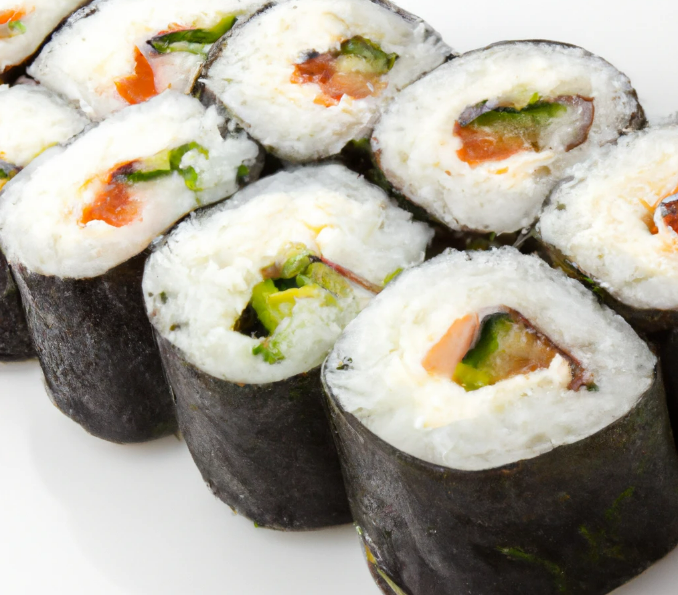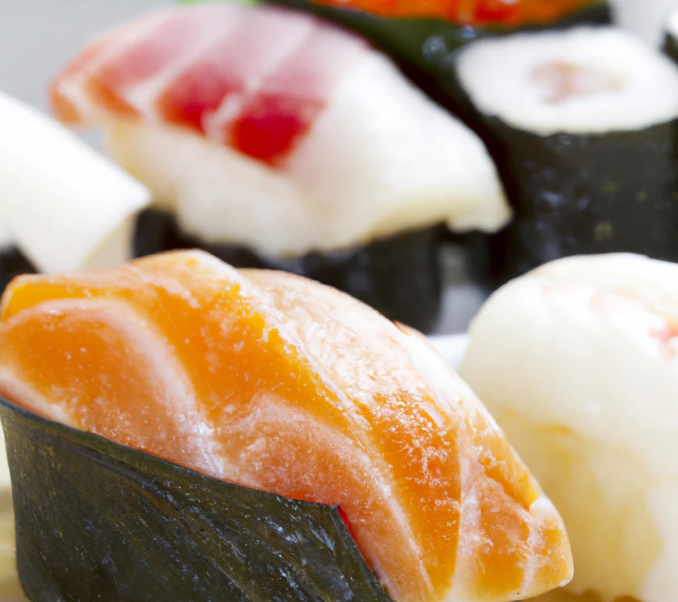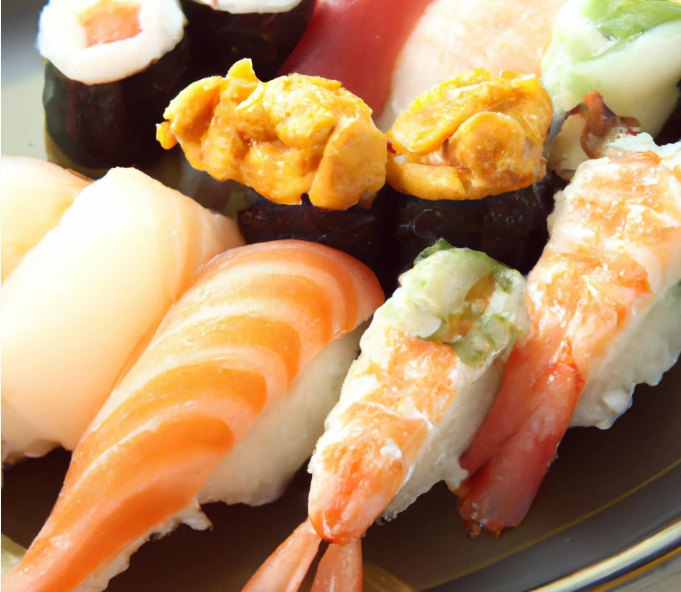Know More About Sushi’s Wrap
Many people love Sushi but when it comes to sushi wraps, I found out that people are unaware of how a Sushi is actually wrapped. One meal that people like for both its flavor and its aesthetic presentation is sushi. Sushi has colorful components within that are wrapped simply for a stunning aesthetic effect.
Most of the often, people don’t know the answer to the question “What is sushi wrapped in,” despite the fact that they generally know the components within sushi. So let’s talk about those ingredients and how to make your sushi wraps tastier!
WHAT IS SUSHI WRAPPED IN?
First, let’s discuss what do you wrap sushi in? Sushi is a food that is quite visually appealing, as we all know. The edible substance used to tie it all together improves the beauty of sushi as the fillings’ colors perfectly mix inside. So what is the edible component that binds sushi?
Sushi was originated from Japan, and Japanese people are very attentive toward their food and nutrition. Therefore, the choice of what to wrap sushi in depends on both its appearance and its nutritional value. The Japanese take into account nutrition, how well it will go with the other flavors, and aesthetics when deciding on a covering for a sushi roll. Traditionally, toasted Nori seaweed has been used to wrap sushi.
Nori is the best kind of seaweed that is available today. As you may already noticed, it has a dark green hue that almost looks black, and it tastes strongly and obviously. Red algae, which are raised in the water, are the source of this seaweed.
Together with the fish in sushi, all of these ingredients offer a satisfying, calorie-friendly dish that is high in protein. The name “Maki” is used to describe this common type of sushi. Of course, there are a tonne of additional materials you may use to create your sushi wraps.
What Else Can Sushi Be Wrapped In?
Sushi may be made with a number of different components, such as Tamagoyaki (Japanese omelette), hundreds of tiny shrimp eggs, avocado, thin cucumber sheets, rice paper, tofu skin, soybean sheets, etc.,The five main categories of sushi include nigiri, sashimi, maki, uramaki, and temaki. Some people use a layer of food to wrap the sushi, while others utilise the sushi itself.
- Tamagoyaki
The Tamago sushi is a well-liked kind of sushi. This is tamagoyaki, a Japanese rolled omelette, wrapped over sushi rice or placed on top of it. Common ingredients used in tamagoyaki include rice vinegar, soy sauce, dashi stock, sugar, salt, mirin, and sake.
To give it its distinctive form, it is often prepared in a rectangular Tamago pan, however a standard pan may also be used.
- Avacado

Avocado may be sliced very thinly and used to keep the contents together. The avocado must be exactly right—not too firm or soft—for this technique to work. On a piece of plastic wrap, arrange the slides so that they are overlapping.
The avocado has a lovely weaving pattern on the outside when the slides are placed in this manner. The wrap is supported and given structure using this technique. The sushi filling is then placed in the centre of the avocado slices, covered with a bamboo mat, and served.
- Rice Paper
In East Asia, rice paper is made from plant-based components that resemble paper. The sheets must be handled carefully because they are extremely thin and fragile to avoid tearing when being wrapped.
They must be soaked in water for a brief period of time to become softer before wrapping because they are marketed as dry and hard.
- Inari – Tofu
Inari Age, or deep-fried and seasoned tofu pockets, are filled with sushi rice to make inari sushi. Other names for Inari include yuba, bean curd skin, and bean curd robes. It is composed of soybeans, however even though it isn’t really tofu, it is given the name tofu because of how close it tastes and feels.
After being deep-fried, the food is submerged in boiling water to remove the excess oil before being simmered with savoury and sweet seasonings to fully relish the tastes. After squeezing out the extra liquid, the sushi is then stuffed inside.
- Soy Bean Sheets
The main ingredient in soy sheets and paper is crushed soybeans, also known as “mamenori” in Japanese. They are thin and flexible, and in Japan, they are frequently used in place of nori sheets to make fusion sushi rolls known as kawaii sushi rolls.
Protein-rich and calorie-free soybean sheets are typically offered in a variety of colours. The hues were achieved without the use of artificial colouring. Instead, to give it its lovely colour, real food and plant extracts are employed.
- Inside-Out Sushi
Sorts of uramaki roll known as “inside-out” sushi has Nori on the inside and rice on the outside. Using the California roll as an illustration, a typical preparation would begin with the toasted Nori sheet, followed by a layer of rice, and finished with a sprinkling of sesame seeds.
Place your bamboo mat that has been covered in plastic, rice side down. You may start rolling when the slices of crab, cucumber, and avocado have been placed on top. After cutting the roll into bite-sized pieces, enjoy!
The entire sushi-making process is taken seriously by the Japanese. Once the preparation of the rice, fish, or other seafood is flawless, the wrapping element must also be flawless.
When choosing a wrapper component, they take into account its nutritional value, how well it will blend with the other tastes, and how the finished product would look. Nori seaweed is often used by the Japanese and is obtained locally.
Another well-liked choice is Tamagoyaki, folded omelets from Japan. To accentuate the mixed colors of the components, and sometimes colored soy paper is utilized. Natural food and plant ingredients give it its color.
In essence, practically any item may be used to make sushi!


